
How to Use Adafruit NeoPixel FeatherWing: Examples, Pinouts, and Specs
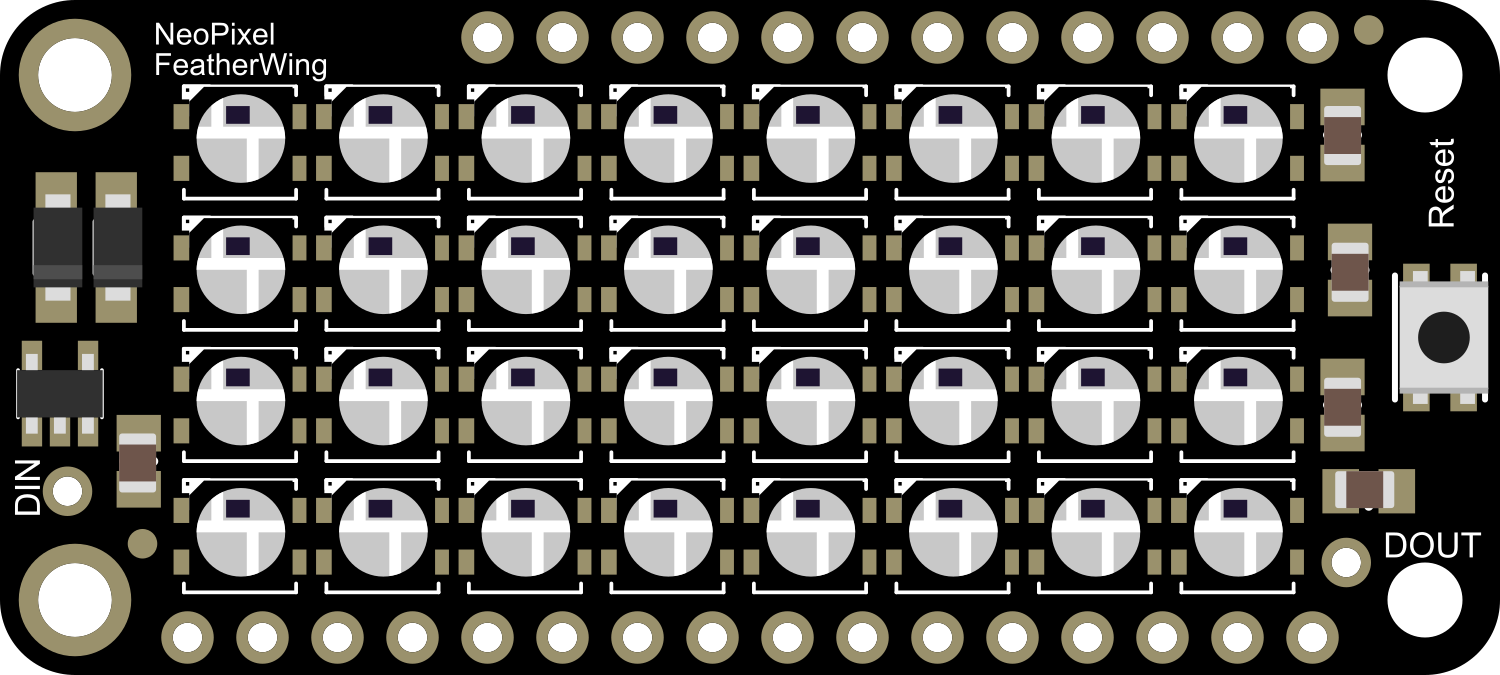
 Design with Adafruit NeoPixel FeatherWing in Cirkit Designer
Design with Adafruit NeoPixel FeatherWing in Cirkit DesignerIntroduction
The Adafruit NeoPixel FeatherWing is an add-on board for the Adafruit Feather ecosystem. It features a matrix of individually addressable RGB LEDs, commonly known as NeoPixels. These LEDs can be controlled with a single microcontroller pin and offer full 24-bit color, which allows for a wide range of color blending and animations. The FeatherWing is ideal for creating colorful and complex lighting effects for wearables, indicators, displays, and any project requiring a splash of vibrant color.
Explore Projects Built with Adafruit NeoPixel FeatherWing
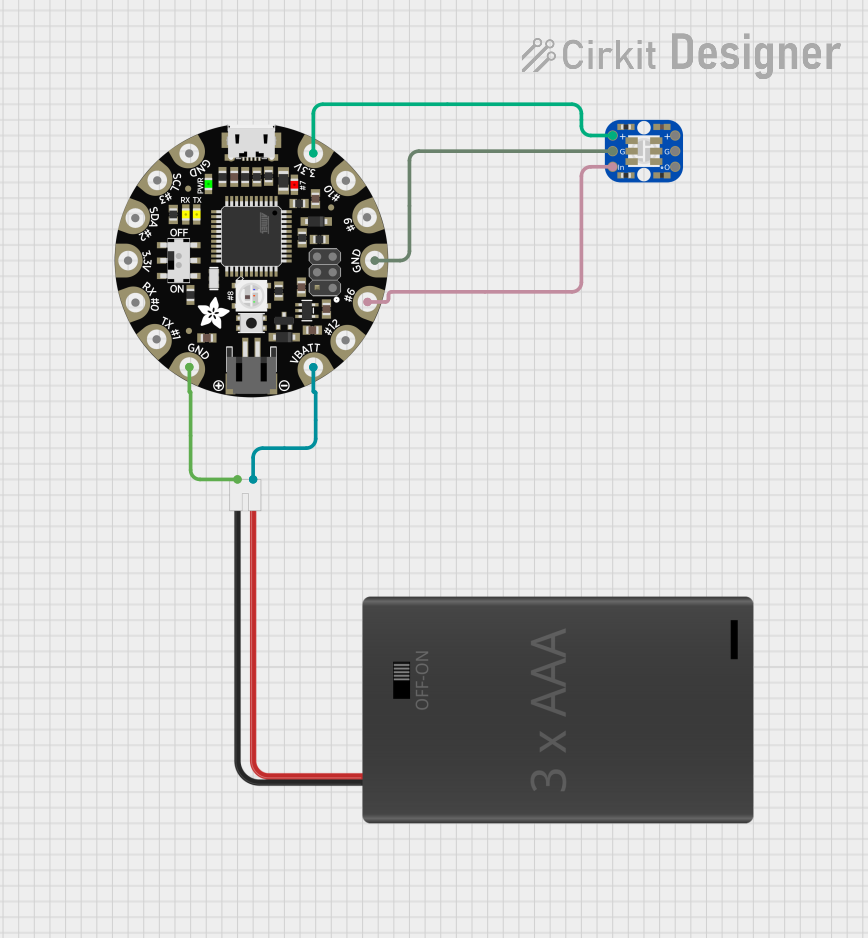
 Open Project in Cirkit Designer
Open Project in Cirkit Designer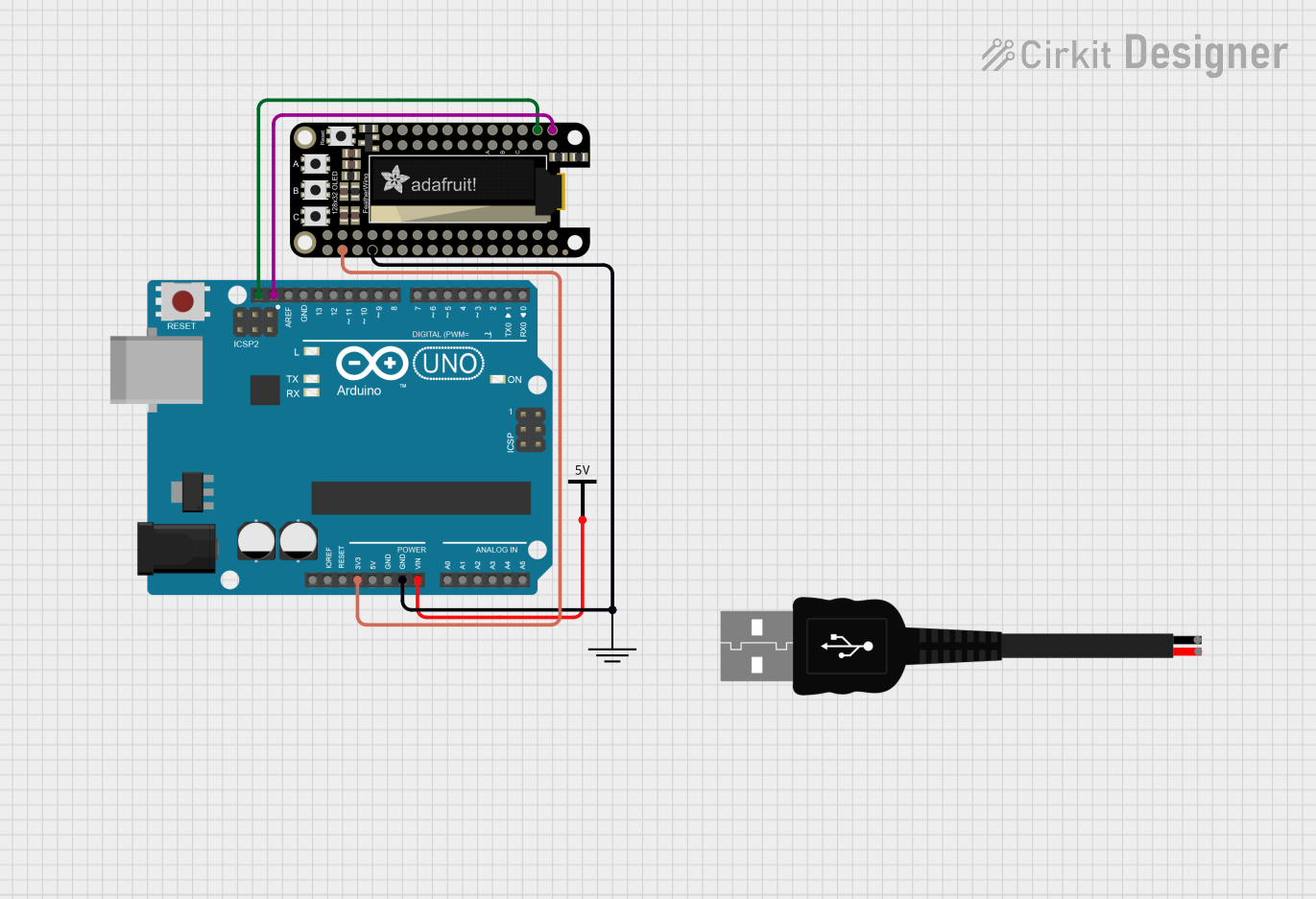
 Open Project in Cirkit Designer
Open Project in Cirkit Designer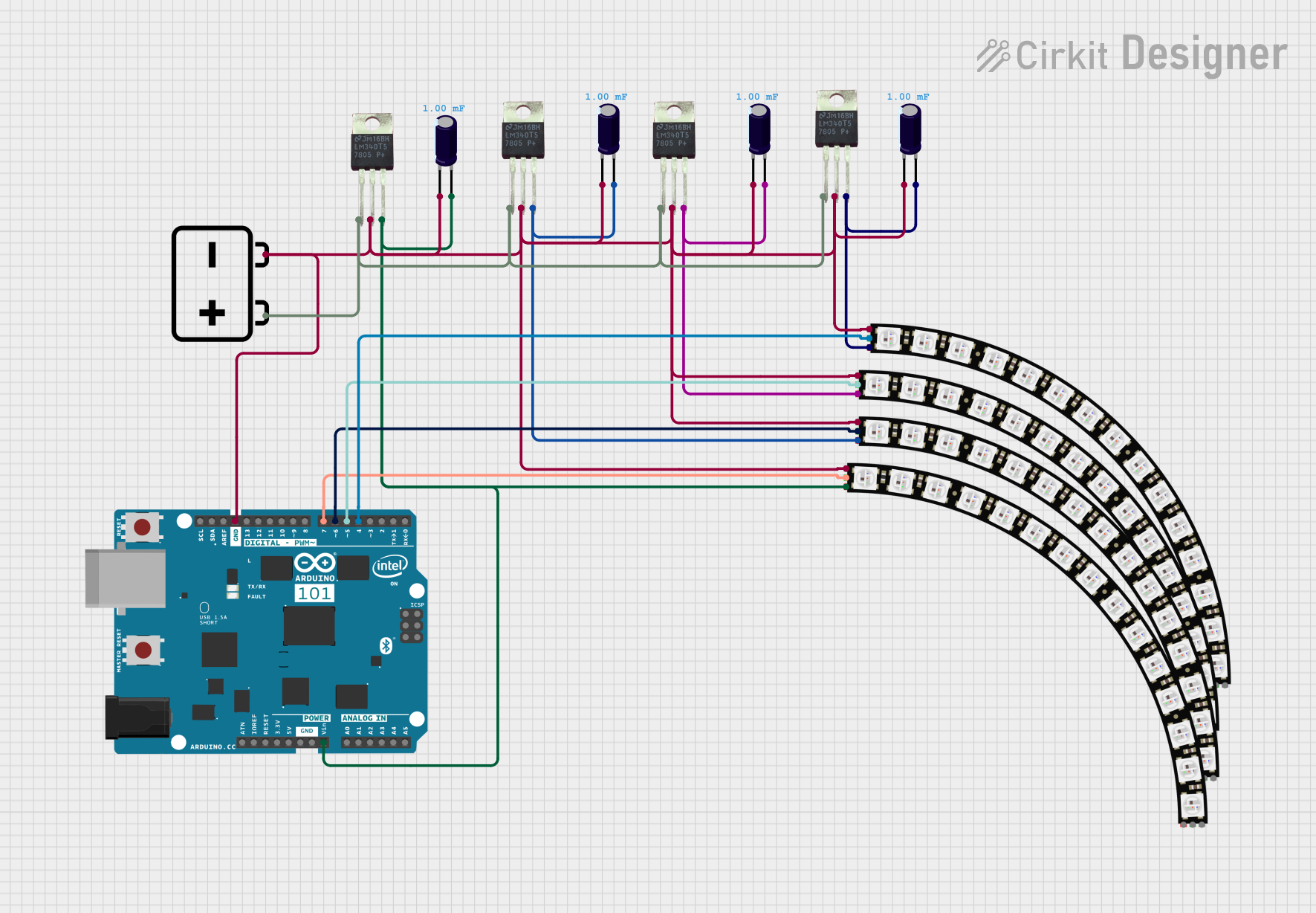
 Open Project in Cirkit Designer
Open Project in Cirkit Designer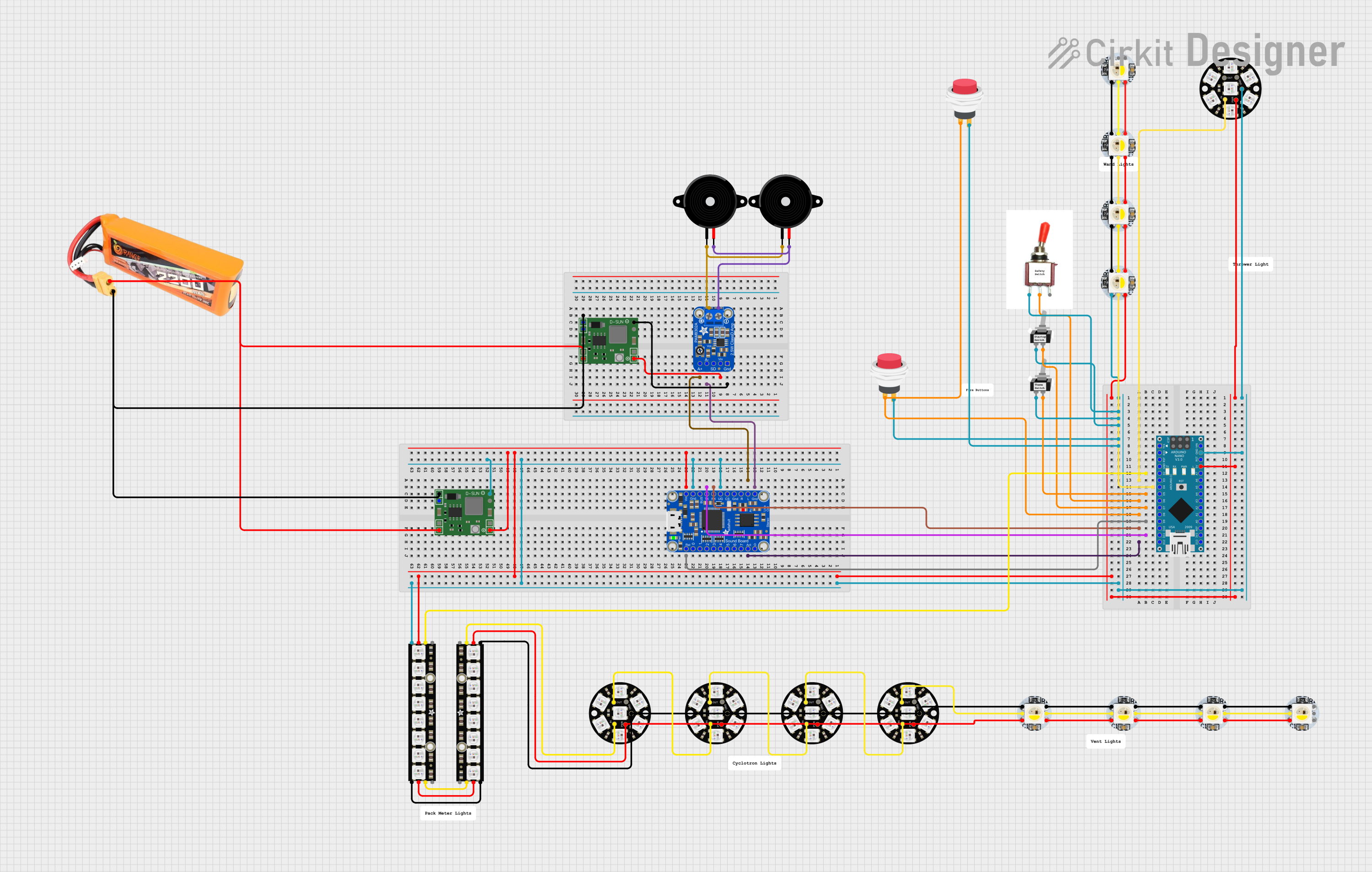
 Open Project in Cirkit Designer
Open Project in Cirkit DesignerExplore Projects Built with Adafruit NeoPixel FeatherWing

 Open Project in Cirkit Designer
Open Project in Cirkit Designer
 Open Project in Cirkit Designer
Open Project in Cirkit Designer
 Open Project in Cirkit Designer
Open Project in Cirkit Designer
 Open Project in Cirkit Designer
Open Project in Cirkit DesignerCommon Applications and Use Cases
- Wearable electronics
- Decorative lighting
- Signal indicators
- Interactive art installations
- Educational projects teaching electronics and programming
Technical Specifications
Key Technical Details
- Operating Voltage: 3.3V to 5V
- Number of LEDs: 4x8 matrix, 32 total NeoPixels
- Communication: Single-wire digital interface
- Maximum Current Draw: ~60mA per LED at full brightness
Pin Configuration and Descriptions
| Pin | Description |
|---|---|
| GND | Ground connection |
| VBAT | Power supply (3.3V to 5V) |
| DIN | Data input from microcontroller |
| DOUT | Data output for chaining additional NeoPixel devices |
Usage Instructions
How to Use the Component in a Circuit
- Powering the FeatherWing: Connect the VBAT pin to a 3.3V to 5V power supply. Ensure that your power supply can handle the maximum current draw if all LEDs are at full brightness.
- Data Connection: Connect the DIN pin to a digital output pin on your microcontroller.
- Ground Connection: Connect the GND pin to the ground on your microcontroller.
Important Considerations and Best Practices
- Always use a current-limiting resistor (about 300-500 Ohms) on the DIN pin to protect the NeoPixels.
- Include a large capacitor (1000µF, 6.3V or higher) across the power supply pins to prevent initial onrush of current from damaging the LEDs.
- Avoid powering the NeoPixels at full brightness for extended periods to prevent overheating.
- When chaining multiple NeoPixel devices, ensure that the power supply can handle the increased current draw.
Example Code for Arduino UNO
#include <Adafruit_NeoPixel.h>
#define PIN 6 // The pin connected to the NeoPixels
#define NUMPIXELS 32 // Number of NeoPixels in the FeatherWing
// Create an instance of the Adafruit_NeoPixel class called "pixels"
Adafruit_NeoPixel pixels(NUMPIXELS, PIN, NEO_GRB + NEO_KHZ800);
void setup() {
pixels.begin(); // Initialize the NeoPixel library.
}
void loop() {
for(int i=0; i<NUMPIXELS; i++) {
pixels.setPixelColor(i, pixels.Color(0,150,0)); // Moderately bright green color.
pixels.show(); // This sends the updated pixel color to the hardware.
delay(500); // A half-second delay between each pixel set.
pixels.setPixelColor(i, pixels.Color(0,0,0)); // Turn off the pixel.
}
}
Ensure that the Adafruit NeoPixel library is installed in your Arduino IDE before uploading this code to your Arduino UNO.
Troubleshooting and FAQs
Common Issues
- LEDs not lighting up: Check connections and ensure the power supply is adequate.
- Flickering LEDs: This may be due to a poor power supply or insufficient decoupling. Ensure capacitors are correctly installed.
- Incorrect colors: Verify that the data line is connected to the correct pin and that the code matches the type of NeoPixel being used.
Solutions and Tips for Troubleshooting
- Double-check wiring, especially the ground connection.
- Use a multimeter to verify that the power supply is delivering the correct voltage.
- Reduce the brightness in your code to lower the current draw if the power supply is inadequate.
- Ensure that the Arduino library for NeoPixel is up to date.
FAQs
Q: Can I use a 3.3V logic level with the NeoPixel FeatherWing?
A: Yes, the NeoPixel FeatherWing can typically understand 3.3V logic; however, for reliability, especially with longer wires, a logic level converter is recommended.
Q: How many NeoPixel FeatherWings can I chain together?
A: This depends on your power supply's capacity. Each NeoPixel can draw up to 60mA, so calculate your requirements accordingly.
Q: Can I cut the FeatherWing to fit a smaller space?
A: No, the FeatherWing is not designed to be cut. Doing so may damage the board and the NeoPixels.